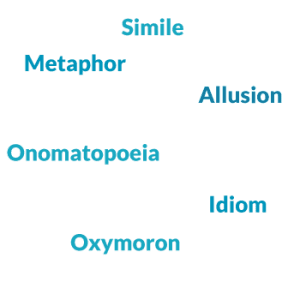7 Tips For Mastering The Art Of Figurative Language

The use of figurative language is an integral part of writing style, and while it can be tough to get the hang of at first, it’s an essential skill that will make your writing stand out from the crowd. If you’re ready to learn how to master the art of figurative language using these seven tips, read on!
What Is Figurative Language?
Figurative language is a tool writers use to help readers visualize what is happening in a story or poem. By using figures of speech like similes and metaphors, writers can paint a picture in the reader’s mind that is both vivid and memorable. Figurative language can also be used to make a point more clearly or to add emotion to a scene.
There are three main types of figurative language: similes, metaphors, and personification. Similes compare two things using the words “like” or “as,” while metaphors make a direct comparison between two things. Personification is when an inanimate object is given human qualities.
Similes
Similes are one of the most common types of figurative language. A simile is a figure of speech that compares two things using the words “like” or “as.” For example, “She was as fast as a cheetah” or “He was as strong as an ox.” Similes are often used in literature to help readers visualize what is happening.
For example, in the novel The Hunger Games, Katniss is described as “moving like a deer” when she is running away from the enemy. This comparison helps the reader picture Katniss running quickly and gracefully through the forest.

Metaphors
Metaphors are another type of figurative language that is used to make a direct comparison between two things. So do not use the words “like” or “as,” but they still help the reader to visualize what is happening.
For example, “She was a lioness” or “He was a rock.” Metaphors can be used to make a point more clearly or to add emotion to a scene. For example, in the novel The Catcher in the Rye, the protagonist, Holden Caulfield, is feeling frustrated and alone. He describes himself as “a madman” to show his feelings. This metaphor makes his feelings more relatable to the reader and also adds to the overall tone of the novel.
Personification
Personification is when an inanimate object is given human qualities. This type of figurative language is used to help readers visualize what is happening or to make a point more clearly. For example, “The wind was howling” or “The sun was smiling.”
Personification can also be used to add emotion to a scene. For instance, in the poem “The Raven,” the raven is personified as a “grim, ungainly, ghastly, gaunt, and ominous bird of yore.” This personification adds to the overall mood of the poem, which is dark and foreboding.

What Is the Function of Figurative Language?
Figurative language is a type of language that uses words or phrases to create a picture or image in the reader’s mind. Figurative language is often used in poetry and literature to create a more vivid or emotional effect. It can also be used in everyday speech to add color and interest.
Figurative language is often used in everyday conversation without much thought. However, when used in writing, it can be mighty. Figurative language can be used to make a point more clearly, to add emotion, or to make the writing more interesting. However, it is essential to use it carefully, as overuse can make writing confusing or difficult to understand.
There are many different types of figurative language, but some of the most common are similes, metaphors, and hyperbole. A simile is a comparison of two things using the words “like” or “as,” such as “She was as fast as a cheetah.” A metaphor is a comparison of two things without using the words “like” or “as,” such as “He was a rock in the storm.” Hyperbole is an exaggeration, such as “I’m so hungry I could eat a horse.” This list of 25 English idioms with their meaning will be helpful to you.
When used effectively, figurative language can be an excellent tool for writers. However, it is essential to be aware of the different types of figurative language and to use them sparingly. Overuse of figurative language can make writing difficult to understand and can take away from the overall message of the piece.
Difference Between Figurative Language and Imagery
Figurative language and imagery are two essential tools writers use to create meaning in their work. Though they are similar in some ways, there are also significant differences between them. Figurative language is primarily used to create an effect or feeling, while imagery creates a more concrete and vivid picture in the reader’s mind.
One key difference between figurative language and imagery is their respective functions. Figurative language is primarily used to create an effect or feeling, often by comparing or using metaphors and similes. Imagery, on the other hand, is used to create more concrete and vivid imagery in the reader’s mind. It can describe people, places, things, or even emotions.
Another critical difference between figurative language and imagery is their respective effects. Figurative language often has a more poetic effect due to its comparisons and metaphors. Imagery, on the other hand, can create a more concrete and realistic effect, making the reader feel as if they are experiencing what is being described.
Figurative language and imagery also differ in terms of how they are used. Figurative language is often used more sparingly, as it can be difficult to understand or interpret. Imagery, on the other hand, can be used more extensively, as it is generally more straightforward.
Tips For Mastering The Figurative Language
1. Use Imagery To Enrich Your Writing
Research has shown that writing with imagery is more effective than writing without, and most people process words in an image-like fashion. To ensure your audience fully absorbs your message, mix in vivid descriptions and images—it’s almost like multi-sensory learning! Examples of figurative language include similes (racing down a river at warp speed), personification (the wind whipped past me as I ran up that hill), and metaphors (e.g., he was a bull in a china shop). While these techniques may seem natural to some writers, many others can benefit from exploring them and learning how to use them with intention.
2. Know When To Use And Not Use Similes
Before you think about whether to use a simile, you first need to know when not to use one. Similes are always preceded by comparison, such as like or as. If your main character is described as an onyx panther in your novel, that’s not a simile; it’s just a description. To create a good simile, ask yourself if you could replace that word with like or as and still have it make sense in context. If not, then try rephrasing it so that you can.

3. Idioms Can Make Your Work Sound More Professional
Make no bones about it is an excellent example of an idiom. Appropriately used idioms can make your writing sound more professional. Idioms are figures of speech that use words and phrases in ways they were not originally intended. Because they can take on multiple meanings, figurative language can give your extra writing punch. You might want to consider using them when you need to describe something beyond what literal language allows. Here are some common examples:
The sky was falling! (It’s raining!)
He hit me where it hurts. (He criticized my work.)
You’re pulling my leg! (You’re joking!)
I’m going around in circles here! (I don’t understand.)
4. Parallelism Is KeyProfessional
There are plenty of examples of figurative language in everyday speech—clichés, for instance, are a great way to get your point across without having to explain yourself. In written work, though, there is less room for simplicity. Show that you know what you’re talking about by using specific examples of figurative language and explaining why they serve a purpose. Consider them an exercise in showing, not telling. If you can make it understandable to everyone else (or nearly everyone else), you can get by with fewer words and more precise sentences.
It’s also worth noting that parallelism is vital when writing figurative language. You don’t want one phrase to be completely different from another; both should have a similar structure and rhythm so as not to distract or disrupt the flow.
It may seem odd to worry about flow when trying to write something interesting, but it does matter—especially if your goal is clarity. A reader will stop reading if they don’t understand what’s going on in a sentence or paragraph; then again, if they understand everything perfectly well but aren’t interested in continuing, the flow becomes just as crucial as understanding itself.
Parallelism keeps readers engaged because it makes sure every sentence sounds like part of a larger whole rather than its own little island itself. As a bonus, you’ll save time and effort by being able to use some of your favorite tracks over and over again instead of creating new ones for every instance. Alliteration, repetition, rhyme —they’re all variations on parallelism! So, take time to look up some common forms of figurative language online before drafting anything important. You’ll be glad you did!

5. Be Flexible With Metaphors
We already know that when you write, readers don’t know what comes next. It’s up to you, then, to make sure your sentences and paragraphs make sense and avoid losing their focus. Avoid unnecessary words or phrases like to or as a result.
That advice also goes for adverbs; most writers use too many adverbs in general, but especially when it comes to concluding thoughts at the end of a paragraph or sentence. Be more direct with your language by using metaphors instead of similes—similes compare two things directly (i.e., she is as pretty as a rose), while metaphors are vaguer (she is a rose).
Vagueness can be good because it allows you to focus on one thing without adding extraneous details. If you want to get fancy, consider personification—this literary device turns an object into a character (i.e., raindrops are crying). Personification will help your writing come alive because objects become characters with personalities and motivations all their own.
6. Even Slang Can Add Interest
While slang is often associated with sloppy writing, people use it in their daily conversations and social media posts. If you don’t want to sound stuffy, there’s nothing wrong with letting a little slang slip into your figurative language examples. It can be a great way to ensure your post doesn’t sound dull. Just keep it natural, and don’t go overboard! You wouldn’t want to say something like: And when I say kick-ass, I mean vamoose. One to two uses of slang per post should do just fine.
7. Don’t Lose Focus In A Sentence Or Paragraph
Many avoid figurative language, viewing it as tricky, but it adds variety and interest, especially slang when used appropriately.
Not all slang suits formal settings, so choose wisely before using slang phrases or expressions. Here are seven tips for mastery:
- Use slang sparingly and thoughtfully, especially if your audience may find certain terms offensive or inappropriate.
- Avoid overusing idioms, which convey meanings beyond their literal definitions (e.g., “raining cats and dogs”), to maintain clarity in writing.
- Use metaphors cautiously, as they describe one thing as another (e.g., “He’s a wolf in sheep’s clothing”), but avoid overdoing it.
- Use hyperbole for emphasis or humor (e.g., “I’ve got a million things to do!”), but avoid overuse to maintain credibility.
- Embrace alliteration, a device using similar-sounding words together (e.g., sleeping soundly), but avoid overusing it to maintain balance.
- Use similes sparingly; they compare things using “like” or “as” to add interest, but overuse can harm your credibility.
- Use personification cautiously, as it gives human traits to non-human things, enhancing writing interest but should not be overused.
What to Take Away
When creating stunning prose, you have to understand one thing: Plain is boring. Using figures of speech – or figurative language – can give your writing an instant boost, whether you’re working with poetry or nonfiction.
To create excellent literary work, you need to be comfortable weaving metaphors into your writing and know how to use similes and other forms of figurative language (i.e., hyperbole) in moderation. While plain speech might get your point across quickly and easily, nobody will remember what you’ve said if it’s delivered without any pizzazz!
Conclusion
A figurative language is a powerful tool that can be used to enhance writing. When used effectively, figurative language can add depth and meaning to a text. Similes, metaphors, and personification are three of the most common types of figurative language. Each can be used in different ways to achieve other effects.
Frequently Asked Questions
Figurative language enhances all writing types by creating vivid images, emphasizing key points, and adding depth beyond just creative writing.
Figurative language uses words to create vivid mental images, simplifying complex ideas and emotions through metaphors, similes, and hyperbole.
Metaphors, similes, personification, hyperbole, and symbolism are key forms of figurative language, helping to illustrate concepts effectively.
Figurative language describes non-literal expressions, like “I’m so hungry I could eat a horse,” enhancing interest in literature. Examples include similes, metaphors, personification, hyperbole, and imagery.
Understanding figurative language enhances comprehension, improves communication skills, and adds depth to the writing and speaking while clarifying others’ messages.




